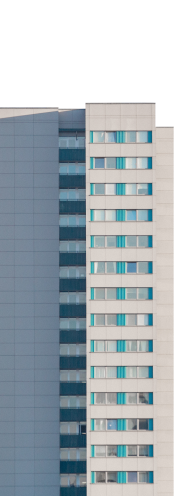This puts us at a critical juncture, one where the benefits of hybrid work could be undermined by a set of preconceived—and unexamined—notions. Working from home leads to lower productivity, many people think. Or it subverts company culture. Or it opens the door to cyberattacks.
But what if those assumptions are wrong? And what if holding onto this outdated thinking is what poses the real threat to the success of the hybrid model? To make this new way of working stick, it’s important to operate under a shared set of facts. We can start by shattering the biggest misperceptions surrounding hybrid work.
51%
Source: Gartner®
1
2
3
MYTH
1MYTH
Hybrid Workers Are More Vulnerable to Cyberattack
Doing some work out of the office, even on personal devices, isn’t inherently more risky. What created vulnerabilities during the hybrid work surge was a lack of security preparation.
WFH ≠ More Risk of Attack
Remote work creates more distributed computer networks, but that doesn’t necessarily create more risk of cyberattack. Data shows that as more people returned to offices last summer, the number of cyber incidents actually increased.














Sources: Identity Theft Resource Center; U.S. Bureau of Labor Statistics (July 2020-June 2021)
Holistic Protection for Hybrid Work
SASE is a secure, scalable framework that gives your company a full view of the cyber threat landscape, so protection follows employees anywhere they work.
$1.4 Million
per incident if they improve their methods for preventing cyberattacks
Source: Ponemon Institute— Andre Leibovici | Principal Security Product Marketing, Citrix
~45%
Source: Malwarebytes
Mind your myths quiz:
Incorrect:








































































































Source: IDG survey
MYTH
2MYTH
Going All-in on Hybrid Work Means Going All-in on the Cloud
Can too much of the cloud be a bad thing? Theoretically, no. But when the cloud limits the way your workforce accesses data and software? A hard yes. Cloud-only options also can be costly, slow to implement and may pose security and compliance issues.
A hybrid cloud model, on the other hand, offers the best way to keep up with the changing demands and multiple locations of the hybrid workforce.
A hybrid cloud means
The Harmony of Hybrids
Why the hybrid cloud is a perfect fit for hybrid work
The Hybrid Cloud Makes It Rain
For five years in a row, saving money on cloud spend is the top priority for IT leaders, a recent survey shows. Enter the hybrid cloud, which has saved some companies as much as 20% in annual network infrastructure expenses.

61%
of IT leaders are seeking cost savings
59%
want to migrate more workloads to the cloud
45%
are pursuing better financial reporting on cloud costs
All-in Can Be Expensive, Whether Public or Private Cloud
For Public Cloud


54%
say high costs are a pain point
For Private Cloud


46%
say high costs are a pain point
Source: IDC
How Does Hybrid Cut Costs?
Source: Citrix

"A hybrid cloud gives you the flexibility to add new instances of both on-premises and public cloud resources as you need them. So, if everybody had to work from home in a snowstorm, you can spin up a lot more instances in the cloud on-demand. Everybody goes back to the office, you shut them back down, and avoid unnecessary infrastructure costs."
Carisa Stringer, Director, Citrix
A Cloud for All Reasons
How do the strengths of the hybrid cloud stack up against the strongest points of other data storage solutions?
MYTH
3MYTH
As Hybrid Work Goes Up, Productivity Goes Down
There’s one thing employees have in common, regardless of age, gender, earnings or family situation: a pervasive desire to work from home at least one day a week. Those feelings are even stronger among employees who grew up in the digital world (and who now make up most of the workforce). These “born digital” employees feel that working hybrid rivals the office in terms of productivity, and provides more creativity and wellbeing than an office setting, a recent Citrix survey found.
In Office Workers
52%
still say the office is the best place for productivity
Hybrid Workers
13%
more efficient working from home, a study showed
While business leaders recognize that hybrid work is here to stay, 52% still say the office is the best place for productivity, the survey shows.
But the data begs to differ. Well before Covid, economists found that employees allowed to work from home were 13% more efficient. And a recent Leesman Index survey showed that employees felt they could do a whole range of work-related tasks—from meetings to reading to creative thinking—more easily at home.
In other words, embracing hybrid work doesn’t mean compromising business goals. With the right tools and culture, it can mean exceeding them.
Mental Myth Making

Incorrect:
Source: WFH Research, as reported in Bloomberg
Correct:
Source: WFH Research, as reported in Bloomberg

“What’s been really surprising is that people still think hybrid work means less work, when the productivity data shows otherwise. I think company culture and lack of management training and empowerment are influencing views, versus the reality of the data.”
Alysia Eve,
Director of Product Marketing, Citrix
The ROI of a Happier Employee
Productivity rises when your teams can work flexibly and fast.
What Makes Remote Work More (or Less) Productive
Americans who reported high WFH efficiency credited these two advantages the most:

Less commuting time

Quiet
space
Americans who reported low WFH efficiency credited these two disadvantages the most:

Tasks can’t be performed remotely

Inadequate equipment
A Culture of Productivity
Companies that know how to deliver the best employee experience (EX) focus on three things, according to a recent survey of IT, Real Estate and HR leaders:
The energy of a company, or how it feels to interact with colleagues and work for the organization.
The top cultural factor (cited by 40%) that contributes to a positive EX is a flexible work environment.
The digital tools that enable employees to work effectively at any time.
EX Advanced organizations are 2x more likely to prioritize access to the technology needed for employees to do their jobs than EX Learners.
The environment where employees work—from office desks to remote spaces.
The physical office plays a critical role in the hybrid work world, and is seen as the “space to collaborate” by two-thirds of all organizations surveyed.
Source: Citrix, Thrive With Employee Experience report






